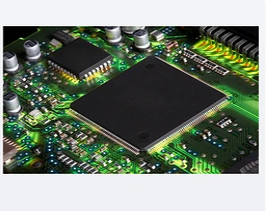This article introduces the factors that affect the PCB design of power circuits, and elaborates on its design principles. The design requirements of power circuits are more stringent than ordinary circuits. If the circuit board is not designed properly, when a large amount of power is transmitted on the circuit board, it is easy to cause accidents, causing extremely serious consequences, and even injuring personnel. If the circuit has low power, small signal rise time and large signal level, the requirements for the power distribution system are not very strict; however, if these factors are changed, the power demand will increase, which requires careful attention In order to find an effective way to solve the problems of circuit board power distribution and component heat dissipation. Need to pay attention to the following aspects when designing the power circuit PCB board.
1. Separation of high-power circuits and low-power circuits
If the current in the circuit is less than 3A, it is a low-power circuit, and if the current in the circuit is more than 3A, it is a high-power circuit. Usually, use feasible low-power level control circuits to control active high-power electronic components. For example, when the TTL circuit works at 5V, if the current is less than 1A, the thyristor can be controlled to turn on and generate up to 50A current. . Usually, the power regulation circuit and the circuit it controls can be designed on the same circuit board.

Figure 1 shows a simple thyristor rectifier control circuit. It can be seen that the insulating pulse transformer is installed in the high-power circuit of the circuit board instead of the control circuit, because its secondary coil is used to drive the high-power thyristor rectifier control circuit. If the low-power circuit and the high-power circuit are designed on the same circuit board, capacitive and inductive coupling will occur between the power circuit and the control circuit, causing the device to malfunction. Therefore, low-power circuits and high-power circuits should be designed on different circuit boards.
2. PCB substrate material thickness
Power circuit devices usually need a suitable heat sink to dissipate a certain amount of heat. If the heat sink is directly mounted on the circuit board, the entire circuit board will rise to the same temperature. Therefore, the choice of substrate must be able to withstand the continuous operation of the device, and epoxy glass laminates are usually used. The most commonly used pressure plate thickness is 1.6mm. When heavier components need to be installed, such as pulse transformers, radiators, chokes, etc., the pressure plate thickness is selected to be 2.4mm or 3.2mm. Now the radiator can be printed in the form of paste application.
3. Copper foil thickness
It is best to use a copper clad laminate with a copper foil thickness of 36um for low-power circuits, while a copper clad laminate with a copper foil thickness of 70um is usually used for high-power circuits. For some special circuits, you can also choose a copper clad laminate with a copper foil thickness of 105.
Fourth, wire width
When designing a power circuit PCB board, the available copper foil on the surface of the circuit board should be fully used as a large current wire. Its production method is to first determine the distance between the wires, and then distribute the remaining copper foil as wires. Wires that transmit large currents should be selected with a larger line width. Therefore, it is necessary to analyze the current in the circuit to determine the most likely current failure and the most prone to problems of the wire in the circuit board, and determine the wire can withstand Limit current. If this is not the case, it is necessary to increase the width of the wire as much as possible.
5. Voltage drop caused by high current
In power circuits, large currents in the circuit board wires can cause considerable voltage drops. Therefore, these large load voltage drops should be avoided as low as possible. If these load currents must pass through the circuit board and cannot be bypassed, it is necessary to ensure that these large voltage drops will not affect the normal function of the circuit when designing the wires.
Sixth, heat dissipation issues
There are two main sources of heat generation on the circuit board: the circuit board itself and the components mounted on it. Every system (and component) has a maximum operating temperature, so it must be ensured that the temperature does not exceed the boundary. The use of radiators, forced exhaust cooling, the layout of components, and the horizontal or vertical installation of the circuit board will affect the temperature of the circuit board and its components. The current EDA tools can quickly and accurately perform thermal analysis based on the relationship between current and heat generation. Any corresponding circuit simulation program (such as SPICE) can simulate static and dynamic heat generation.
Seven, conclusion
This article is just an introduction to the PCB design principles of power circuits. Of course, after all, the knowledge is limited, and it is inevitable that there are some biases. Please correct me for the inadequacies.